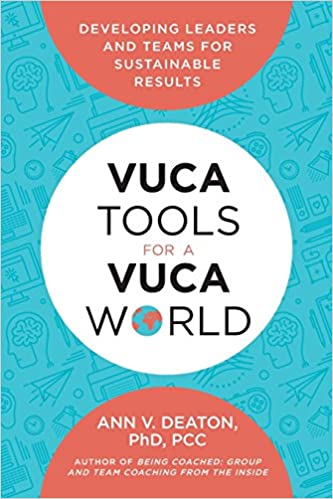Key concepts of the book
The world is increasingly VUCA: Volatile, Uncertain, Complex, Ambiguous.
This acronym has become more and more popular in the organizational world, thanks also to the Covid19 pandemic, the biggest experiment of “VUCA world” so far. The value of this book lies in its formula: it is based on the story of an imaginary but very realistic company, Tech Environments, which is facing a series of difficulties: its products are less and less innovative, employees are dissatisfied to the point of leaving, managers are often in conflict with each other, and its reputation on the web is declining.
Until they manage to give a name to the difficulties they are experiencing: this is, in fact, the “VUCA world”. The key message is that it is useless to complain about the situation, or to overreact, or to bind to the past as it may be natural to do, because it would be a waste of energy and would lead to failure. The VUCA is a call to action, therefore it is necessary to listen to the signals, to regain control of oneself in order to regain control over reality and the market, to understand that many ways of acting that were once functional -or even just acceptable or accepted- today no longer bring results.
The narrative also delves into some mental models and tools that can help, such as: the Appreciative Inquiry, Coaching in general and equestrian coaching in particular, the complexity reduction techniques of double clicking, and Polarity Thinking. And it tells how the protagonists identify an approach to VUCA, which has the same kind of acronym:
- Value, to have a bottom line that gives solidity and guides action
- Us, because working as an ally multiplies power compared to self-sufficiency and conflict
- Curiosity, one of the best ways to deal with not knowing, through the ability and desire to ask questions, immerse oneself in reality and discover it
- Aspirations, which offer vision, energy and clarity to move forward and similarly inspire others.
The message itself is not new, but the way of presenting it is very concrete and can provide interesting stimuli with respect to the daily problems of this team of managers struggling with the VUCA world, with whom it is really very easy and immediate to identify.
Quotes from the book
Regardless of your priorities, things change quickly. Identify what you can rely on: organizational and core values, processes, what doesn’t change. Discover or create havens of stability, and create bandwidth and procedures for more agile responses.
Don’t assume that what you’ve always done will still work. Take a fresh look at situations and challenge your assumptions. Collaborate with others. Recognize that uncertainty is a feature of the learning process. Deal with the large amount of information by making sure you see the whole picture and leveraging the entire team. Develop systems to organize the data you have. Ask curious questions. Invest in the growth of your team. Avoid silos. Recognize the inefficiencies that occur when things aren’t clear and provide explicit direction. Listen to the underlying meanings and priorities. Double-click often. Celebrate results along the way.
VUCA is a challenge because we’re not sure what to expect. We don’t know, and that’s uncomfortable. One of the best ways to deal with not knowing is to ask questions, dive in, and discover. Curiosity opens doors and breaks down barriers.
Book Structure & Contents
The book is divided into three parts.
In the first, we get to know the protagonists of the story by following them in their daily lives, as the situations they manage become increasingly difficult and they struggle to cope. Also in this part, during a difficult meeting, a manager proposes the VUCA world as a new key to understand their situation, and initiates a process of reinterpreting reality, which at first presents many difficulties: those, of course, related to the ability to recognize one’s own part of responsibility for the problems, stop complaining and begin to change starting with oneself.
In the second part, the team moves more decisively in the right direction and things begin to change. Of course, it is not easy, there is some resistance, there is the difficulty of becoming aware of personal limits that are clearly seen outside. But the team pulls itself together and begins to look outside its mental schemes, opening up to opportunities -and not only to the threat- of the VUCA world. The third part provides the keys to understanding the history of Tech Environments: the events are related to the characteristics of vulnerability, uncertainty, complexity and ambiguity, the tools used are explored in terms of their impact on values, perception of themselves as a team and not as individuals, curiosity, aspirations to strive for. A good bibliographic and sitographic support is also provided to deepen the use of the tools used by the protagonists.
Reading Instructions
The theme has returned to the forefront and expanded after the radical change in the world that followed the Covid-19 pandemic. It can be stimulating -especially for the narrative mode chosen by the author- to put under the familiar labels of volatility, uncertainty, complexity and ambiguity, something very concrete and close to our daily life: problems, difficulties, emotions, moods, behaviors, decisions. Those described have the merit of being close to everyday life, and therefore of making us think: surely, we too have experienced some of these. And sometimes we have struggled to make sense of them, to give them clear boundaries, perhaps even to give them a name. And since a return to the past ways of managing our lives is certainly not predictable, we can accept the invitation to let ourselves be stimulated by curiosity: after all, it is a VUCA tool to deal with the VUCA world.
